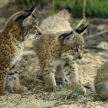Thankful to Ukraine
For a reason few people know about

For nine months now, Ukraine, a large country of 40 million people in the heart of Europe, is bearing unimaginable costs and losses in an unprovoked war that its eastern neighbor Russia unleashed on Feb.24, 2022.
We should be thankful that Ukraine's soldiers and volunteers of territorial defense units continue to fight for democracy and for their homeland's sovereignty, territorial integrity, and identity. They are literally on the front line of fighting the fascist force that if allowed to win will absorb not only Ukraine but also Europe and plunge the whole world into the darkness of war and death. For that reason alone, all democracies of the world must support Ukraine and be grateful for its bravery and determination to fight.
In the spirit of Thanksgiving, however, I would like to give you another reason to thank Ukraine. It's what you put on your table almost every day without giving a second thought about where it comes from: Bread.
Ukraine is the world's second largest exporter of wheat (after Russia) and is often described as "Europe's breadbasket." Before the current Russian invasion, Ukraine exported wheat to many countries in Africa and Middle East. We now understand how important this Ukrainian export was, just by following Russia's "grain war and terror" attempting to stop Ukrainian grain transportation through the Azov and Black Seas.
What is less known, however, is that the Ukrainian wheat "grandmothered" most of the wheat varieties now grown here in the United States. Currently, America grows as much wheat as Russia, but similarly to China and India that together produced about 30% of the world's wheat in 2020 (17% and 12.5% respectively), a lot of American-grown wheat is used for domestic consumption rather than for export.

Most of the US-grown wheat is connected to Ukraine's land. "How?" you'd ask. For that, we need to dig a little deeper into history.
When Catherine the Great, a German princess turned Russian Empress by marriage, expanded Russia into what today is Southern Ukraine, she wanted to make it attractive for entrepreneurial and hard-working foreign settlers, especially from western Europe. According to the Internet Encyclopedia of Ukraine, her "decree of 1763-4 guaranteed generous financial incentives, religious freedom and exemption from military service" for those who ventured to move to new Russian lands (previously under the Lithuanian-Rutherian and Cossack Hetman State rule). Among those who took advantage of this opportunity, were the German and Dutch Mennonites who settled mostly south of the Dnieper River and in the Molochna River Valley in today's Zaporizhia region of Ukraine. They were outstanding farmers of wheat with great interest in milling technologies and manufacturing of agricultural equipment. For a century, they prospered in Ukraine, and even though they lived in isolated communities to preserve their language, religion, and culture, Ukrainians regarded them highly for their model farms and willingness to share their knowledge of land cultivation.
In the late 1860s, however, the relationship between Germany and Russia soured. Catherine's degree was revoked in 1871. Not only the Mennonites lost their privileged colonizer status and administrative autonomy, they also were required to use Russian as the language of instruction in schools and starting in 1874 were expected to perform the noncombatant military service. This was the last drop for the Mennonites, whose religious convictions rejected military service. Most of them upped and left in two directions: East by buggies to Siberia where the watchful tsarist regime couldn't get to them easily (there are about 200,000 Russian Mennonites living around Omsk now) and west by sea and ocean to North America. As true progressors, they took bags of their favorite grain - red turkey wheat - with them.
In 1874, the first Ukrainian-Russian-German-Dutch Mennonites ended up in Central Kansas. They noticed right away that the soil there was similar to the steppe soil of the near-Azov region from which they fled. They also noticed that the local wheat grown in the US was a lot softer and not as good-tasting as their wheat. So they started growing the red turkey wheat right away, and at first they had trouble selling it to the local mills because it was so hard it broke many of the equipment pieces. But the milled flour, everyone noticed, made much better-tasting and more filling bread, as it had higher content of protein and lower levels of sugar. Thus the demand grew, forcing the milling technologies to improve as well. Also, the original red turkey wheat started to grow very tall on the new soil, which made it more difficult to harvest, so the Mennonites and American farmers started to cross it with other, shorter and softer, local varieties. As a result, we have a wide variety of great-tasting wheats in North America today, that were all grandmothered by red turkey Ukrainian wheat.
Why is it called red turkey? Because at dusk, when the wheat is bathing in the warm light of the setting sun, it has a nice reddish hue that makes the field look like a natural wonder. But during the day, it's bright yellow, which is reflected in the Ukrainian flag symbolizing bright yellow healthy wheat hugged by the clear blue Ukrainian sky. Please remember that as you break bread at your Thanksgiving table, or on any other day. Support Ukraine in every way you can.

About the Creator
Lana V Lynx
Avid reader and occasional writer of satire and short fiction. For my own sanity and security, I write under a pen name. My books: Moscow Calling - 2017 and President & Psychiatrist
Enjoyed the story? Support the Creator.
Subscribe for free to receive all their stories in your feed. You could also pledge your support or give them a one-off tip, letting them know you appreciate their work.






Comments
There are no comments for this story
Be the first to respond and start the conversation.